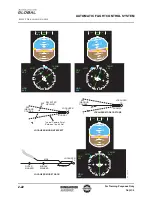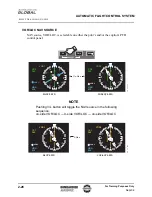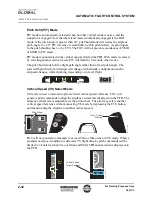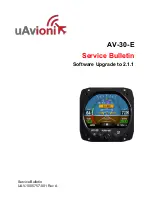
For Training Purposes Only
Sept 04
2-21
P I L O T T R A I N I N G G U I D E
AUTOMATIC FLIGHT CONTROL SYSTEM
Localizer (LOC) Mode
Localizer mode provides for automatic intercept, capture and tracking of the front
course localizer beam, to line up on the centerline of the runway in use.
Localizer capture and tracking commands are based on the distance-to-transmitter.
The FMS will output distance to tuned navaid or distance to destination, based on the
following conditions:
•
If the FMS is used to autotune the LOC, the FMS will output the distance to the
tuned LOC transmitter
•
If the FMS is tuned manually by LOC-ident on the CDU, the FMS will output the
distance to the tuned LOC transmitter, regardless of approach or flightplan
•
If the LOC frequency is manually tuned with a LOC-frequency on the CDU, or if
tuned on the RMU, and the FMS will output distance to destination selected in the
flight plan
•
If the LOC frequency is manually tuned with a LOC-frequency on the CDU, or if
tuned on the RMU, and the FMS does not have a destination selected, no distance
information will be output by the FMS. In this case, the AFCS will use estimated
distance
The AFCS priority for determining distance to LOC transmitter is:
•
Distance-to-station (DME) information, if the DME is valid and co-located with
the localizer transmitter
•
If DME information is not available, or not co-located, the distance to localizer is
based on radio altitude, true airspeed, glideslope deviation and an assumed flight
path angle of 3°
•
If, in addition to invalid DME, the radio altitude is invalid, the AFCS will use FMS
distance information
•
If the FMS is also unavailable, then AFCS will use a default value of 10 nm
If a destination other than the one designated in the FMS flight plan is used and the
LOC-frequency is manually tuned with a LOC-frequency on the CDU, or tuned on the
RMU, and DME and RAD ALT are not available, the FMS will output erroneous
distance to destination data. To prevent potential problems in this circumstance, a limit
was placed on the value the AFCS will accept from the FMS for distance (30 nm).
Testing showed that when performing a close-in capture (7 - 10 nm) using the
maximum value for distance (30 nm), the LOC overshoots on initial capture were
within acceptable limits and were damped out within 2 oscillations.
FD roll commands are ± 30° when capturing localizer. During localizer track mode,
the roll commands are ± 24°. Roll rate commands are 7°/sec. during capture and 5.5°/
sec. during track modes. The optimum intercept angle is 45°. If intercept angle is
greater than 45°, course cut limiting may occur. As LOC moves from ARMED to
ACTIVE, the LOC will flash for approximately 5 seconds, when active.















































